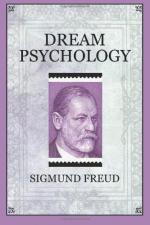Thus there was required a second activity—in our terminology the activity of a second system—which should not permit the memory occupation to advance to perception and therefrom to restrict the psychic forces, but should lead the excitement emanating from the craving stimulus by a devious path over the spontaneous motility which ultimately should so change the outer world as to allow the real perception of the object of gratification to take place. Thus far we have elaborated the plan of the psychic apparatus; these two systems are the germ of the Unc. and Forec, which we include in the fully developed apparatus.
In order to be in a position successfully to change the outer world through the motility, there is required the accumulation of a large sum of experiences in the memory systems as well as a manifold fixation of the relations which are evoked in this memory material by different end-presentations. We now proceed further with our assumption. The manifold activity of the second system, tentatively sending forth and retracting energy, must on the one hand have full command over all memory material, but on the other hand it would be a superfluous expenditure for it to send to the individual mental paths large quantities of energy which would thus flow off to no purpose, diminishing the quantity available for the transformation of the outer world. In the interests of expediency I therefore postulate that the second system succeeds in maintaining the greater part of the occupation energy in a dormant state and in using but a small portion for the purposes of displacement. The mechanism of these processes is entirely unknown to me; any one who wishes to follow up these ideas must try to find the physical analogies and prepare the way for a demonstration of the process of motion in the stimulation of the neuron. I merely hold to the idea that the activity of the first [Greek: Psi]-system is directed to the free outflow of the quantities of excitement, and that the second system brings about an inhibition of this outflow through the energies emanating from it, i.e. it produces a transformation into dormant energy, probably by raising the level. I therefore assume that under the control of the second system as compared with the first, the course of the excitement is bound to entirely different mechanical conditions. After the second system has finished its tentative mental work, it removes the inhibition and congestion of the excitements and allows these excitements to flow off to the motility.




